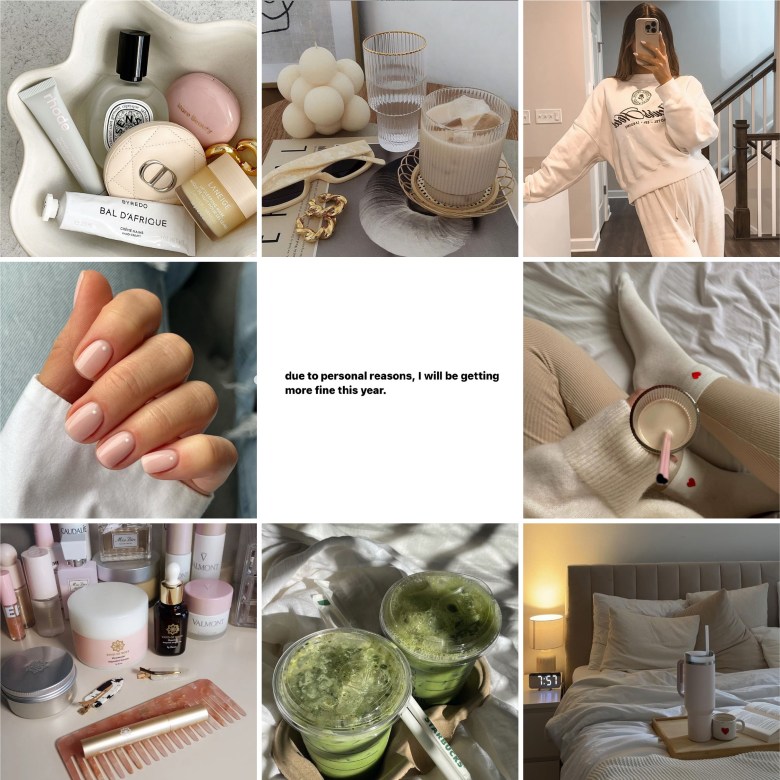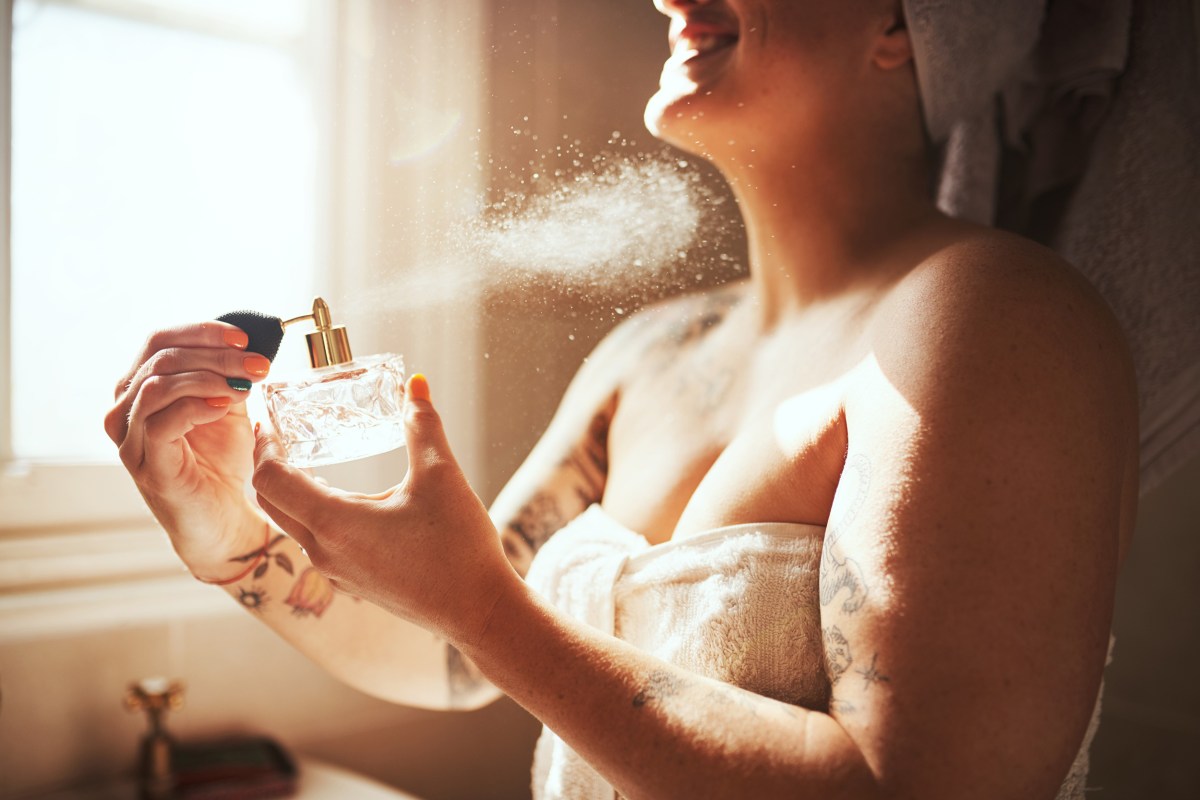The heady smell of perfumer’s ethanol in The ScentRoom LA has ceased to bother me. It’s the result of hundreds, maybe thousands, of perfumes reaching osmotic equilibrium in the air, fighting for airtime in your nostrils. It reminds me of how it smelled, wandering through the bright lights of a department store fragrance section with my mother as a little girl, every scent blending together to smell like a woman, but not one I’d ever met. A projection of a woman, then; the platonic ideal of a woman that exists in the collective imagination. The one from whom every degree of separation is, in philosopher Judith Butler’s language, “punished.”
The feminine is forged within this thick haze of ethanol and roses. Girlhood, Judith Butler writes, is discursive, performed every single day. One “becomes” a woman, is “always under social compulsion to become one.” Girlhood is taught and must be studied with the rigor of science or the arts. There were times, sitting on the edge of my mother’s tub, where I saw spots or passed out from the haze, and the low blood pressure — another gift of my mother’s. Regardless, I came back to my perch nearly every day to study this backstage peek at a real-life woman, to watch her spill the prop closet of femininity onto her half of the marble countertop and set about making a better girl. Virtue smelled like a heavy cloud of aldehyde and burning hair. Girlhood is not given, it is earned.
My mother’s scent of choice circa 2008 was Dolce & Gabbana’s horrid little self-titled aromatic eau de toilette that I only recognize from the clear red cap nestled atop the bottle like an alarm. “Never one spray,” my dad remarks years later in a cloud of dab pen smoke. “It was always kssh, kssh, kssh, kssh, kssh.”
The scent has notes of aldehyde, citrus, white floral and sandalwood. Aldehydes are a chemical used in perfumery, most widely known for their use in Chanel No. 5, perhaps the most famous perfume of all time. It is maybe due to Chanel No. 5’s popularity that the trend cycle was as cruel to the scent as it was: Aldehydic perfumes often hit the 2000s baby nose like the smell of an uptight old woman. “Personally,” writes Fragrantica user TheSniffer, “I tend to find aldehyde fragrances mature, and headache inducing.” The other popular criticism of aldehydes is that they are highly artificial. However, the artifice of aldehydic scents is an embrace of the intent of the history of perfumery, and that of feminine ritual itself: performance in pursuit of the evocation of an image.
These days, aldehydes have been replaced by musky scents boasting neutrality, such as social media sensation “Glossier You.” Advertised as “a personal skin-scent enhancer … to let more of You shine through,” Glossier You seeks to be invisible on the skin. It is, of course, a scent in its own right, with notes of iris, pink pepper, ambroxan — a synthetic musk with a dry smell — and ambrette. Even so, its near-universal adoption by teeny-20-bopper-somethings speaks to an achievement of this invisibility. Scents like this — woody, papery musks that promise to be your skin but better — have secured their place as the listicle darlings of the early 2020s. Each described as comfy and clean, it is undeniable that these scents are riding the crest of the Clean Girl trend.

The Clean Girl aesthetic was popularized on TikTok, beginning, arguably, with the popularity of Olaplex, the Dyson Airwrap and Mini Uggs around Christmas 2021, finally hitting the think-piece production mill in early-mid 2022. The aesthetic, searchable on Instagram or TikTok, can be summed up in the image of a thin white woman in a luxury apartment with white walls, making green juice in her pristine kitchen in Alo Yoga before she heads to Pilates.
Many of the signifiers associated with the Clean Girl aesthetic deal, intrinsically, with homemaking and motherhood. A clean house with a clean kitchen and well-fed children is perhaps one of the oldest feminine signifiers in the Western world. It is equal parts a historical relic of the Western frontier and an ahistorical simulacra created by centuries of fanciful tales about the brave white people of that frontier. Clean Girl Instagram is a close neighbor of neo-homesteading Instagram, where one can find wealthy white women making sourdough from scratch in their cottages while their children play around the hems of their floral-print skirts.
It is no coincidence that the Clean Girl aesthetic coincides with this “trad wife” trend, the result of the pendulum swinging from 2016-era girlboss feminism to a return to traditional gender roles. “RIGHT NOW, THERE ARE WOMEN ENTERING A NEW ERA OF LEARNING HOW TO GO BACK TO A LIFE THAT THEY WERE TAUGHT TO MOVE AWAY FROM. AND I’M HERE FOR IT” (@twopawsfarmhouse, 26.3k+ likes, 2024). There is an impression among conservative female homemakers that the 2010s social media buzz about the girlboss reset the history of women being forced to remain in the home, and that to return to it is a feminist act. “We have been explicitly told that (homemaking) is demeaning and not a good use of women’s intelligence,” reads one comment on TwoPaws’ post.
As this sentiment grows, it tracks how the Clean Girl lives to engage in the ritual of cleaning and keeping her home in a surge of “deep clean with me” videos. Brightly colored cleaning products jump out from the swaths of influencer white and beige as she goes about constructing a stage-set home. The white, according to parent blogger Kathryn Jezer-Morton, is no accident: “influencers are encouraged to decorate and dress in neutrals because it allows sponsored products to pop visually in contrast. This trend is now … everyone’s home.”
Anthropologist Marc Auge characterizes the non-place as a space devoid of evidence of human life, only created in service of the flow of capital. The non-place is “invaded by text,” a space of marketing, ahistorical, lacking accumulation of human activity. The Clean Girl’s apartment is characterized by its non-placeness: It is a vinyl-floored palace in the sky full of white linens and spotless countertops. The fact that the Clean Girl leaves behind no trace of human life is also evidently representative of the moral weight given to women’s relationship with housework: the construction of homemaking as a feminine task.
“This embrace of excess could even be called campy, a smiling embrace of the construction of the feminine through artifice.”
Perfume is different from these other feminine signifiers in terms of its necessity in constructing the image of a Woman. A mother who puts her work before her children tears at our understanding of femininity. A woman without makeup at a job interview is barely a woman at all. A woman without perfume, however, so long as she doesn’t smell awful, is passable.
Perfume is an extraneous, almost showy step beyond the done-up image of a woman as society would have her. There is, perhaps, a shred of agency in this gesture. This embrace of excess could even be called campy, a smiling embrace of the construction of the feminine through artifice: performance that understands itself as performance. “Perfumes serve the purpose of the most superfluous of all forms of luxury,” wrote Roman naturalist Pliny the Elder in 1 AD. “Ingredients lose their scent at once and die in the very hour when they are used.”
The trend of Clean Girl perfumes that seek to wear like a cotton sheet over the skin works against the intrinsically superfluous gesture of perfume. The Clean Girl’s femininity is characterized by a naturalization, a concealing act, of the construction of the feminine signifier: eyelash extensions instead of falsies, subtle French ombré manicures, soft Pilates videos that hide the work of maintaining a low body-fat percentage. This sentiment is evident in the aesthetics’ subsuming of linen/musk/paper perfumes that purport to be invisible on the skin; it is performance attempting to conceal its identity as a performance.
Understanding the artifice of femininity defeats part of its structural power — thus the importance of the consciousness raising groups of the ’70s that sought to alert women to their own condition. The power of a dominant male reality is bolstered by its invisibility, by the idea that the structures of patriarchy are natural, that things have always been this way, as Butler said. Even still, is knowing this — yet continuing to engage in this performance — enough to subvert it thoroughly?
We welcome reader letters. Email High Country News at editor@hcn.org or submit a letter to the editor. See our letters to the editor policy.


